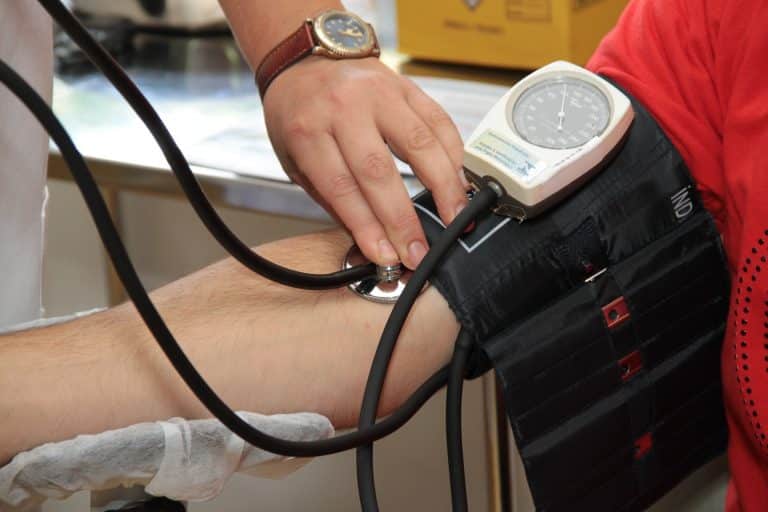CNA Personal Care Skills 1
You have been assigned to administer a S.S.E. to Mr. Taylor. It has been several months since you have performed this procedure. To refresh your memory, you should refer to the
Before performing any procedure or giving care to a client, you must first be trained and demonstrate that you know what to do. After training, review procedures in the Policy and Procedure Manual that is on your unit or online at your facility. Do not begin a procedure if you aren't certain how to do it.
When cleaning a male's genital area during perineal care, the nurse aide should
Male perineal care begins by washing the inner thighs and inguinal area. The penis is washed first, starting at the tip. If the man is uncircumcised, retract the foreskin to clean the tip of the penis. Return the foreskin after washing; if it is not returned, it can tighten around the shaft, causing pain. Wash the shaft of the penis, then the scrotum. Roll the man to his side to wash the outer buttocks, then the inner buttocks and rectal area.
To prevent dehydration of the client, the nurse aide SHOULD
Adequate hydration can be done during the day. Besides offering the client fluids, make sure there are beverages available during meals. Foods such as fruits, vegetables, and frozen ice pops are also good sources of liquid. Do not add extra salt or give salt tablets. Early signs of dehdration are dark urine, fatigue, dizziness, and a dry mouth.
When providing foot care to a diabetic resident it is important for the nurse aide to _________.
Check the feet of diabetics daily and report any signs of skin breakdown or injury. Because diabetics often have neuropathy, or nerve damage, they are unable to detect if their feet are injured. Even trimming toenails can cause an injury. Feet must be clean and dry, especially between the toes. Diabetics need expert care from a podiatrist or a qualified foot care professional.
A resident has refused to eat breakfast and lunch. The nurse aide should
As the front-line health care professional, the nurse aide may be the first to notice a change in the resident. If the resident refuses meals, notify the nurse. The resident's condition may require medical attention. Do not threaten or punish the resident.
Urinary incontinence is a predisposing factor to
Exposure to feces and urine is one of the most common causes for skin irritation and breakdown. Thorough cleaning after a client has had an incontinent episode is important for several reasons. If perineal skin stays wet, it becomes waterlogged and fragile. Urine contains ammonia, a harsh chemical that damages skin. Many clients have dry skin which can develop tiny cracks, allowing bacteria to enter the body. Clean the client, dry the area, and apply a barrier ointment to minimize any future contact by feces and urine.
A resident’s dentures should be stored in
Dentures are improtant for the client's nutrition, as well as for their appearance and self-esteem. Handle dentures carefully, because they are expensive to replace. After cleaning, place the dentures into a clean denture cup filled with cold water and labeled with the client's name. Do not place dentures in a tissue or paper towel; they could be accidentally thrown away.
Your client has a fractured hip. The best way to turn is to _________.
Always check with the nurse before turning or moving a patient with a fractured hip. Following hip surgery, the client should be positioned to maintain natural alignment of the leg. A pillow or wedge is placed between the legs keeps the legs in the correct position. Ankles and legs cannot be crossed, and toes should point toward the ceiling. The hip should not be rotated inwards or outwards. The client can never lie on the non-operative side.
Why should you wash a resident’s hands before a meal, even when you are feeding her?
Washing hands before eating is important for everyone. A resident's hands can be soiled from touching objects, as well as their noses and mouths between meals. Even if the resident is being fed, they may touch the food or their mouths during the meal, increasing the risk of spreading germs. Be sure to wash under fingernails, which carry the most germs.
To protect a patient’s skin when moving them up in bed, you should _______.
Use a draw or lift sheet to move a patient up in bed. Two people are required to move the patient. Explain to the patient what you are going to do. Lower the head of the bed to a flat position. Roll the patient to one side and place a rolled draw sheet as far as possible under the patient. Roll the patient to the other side to pull out the draw sheet. If possible, ask the patient to bend their legs. On a count of three, lift the patient up in bed. Roll the patient to remove the draw sheet and elevate the head of the bed.
When you are giving hair care you should particularly observe for the following
Head lice are tiny insects without wings. They are the same size as a sesame seed. They feed on blood in the scalp. The female louse lays about 10 eggs a day, gluing them to hair strands near the scalp. They hatch in about ten days and live 40-50 days. Lice are spread by sharing objects such as combs, brushes, and hair accessories. Carefully check the client's scalp when washing or combing their hair. Observe for scratching behind the ears and at the base of the neck. If lice are detected, treatment is with a special shampoo and combing the hair with a fine-toothed comb.
An aide is pushing a resident down the hall with a wheelchair when a call light lights up. The aide should
Prioritizing and teamwork are necessary to give excellent patient care. If possible, stopping to respond to a call light, after safely parking the wheel chair, is the best action. The nurse aide can find out what is needed and ask another team member to follow up. Or, if it's an emergency, the aide can call for help and begin to assist the patient.
In what position should the nurse aide place the unconscious person when giving oral care?
When giving oral care to an unconscious client, place the client in a lateral (side-lying) position, with their head turned toward you. The bed can remain flat or the head can be raised to a semi-Fowler's position. With a lateral position, the fluids can drain out of the mouth into the mouth basin, rather than down the client's throat. Aspiration can be serious, leading to pneumonia. Always have a bulb syringe available to clear the client's mouth as needed.
Mr. Francis is blind. When ambulating him, you should walk ________.
When assisting a client who is blind or has low vision, allow them to hold your arm so you can guide them. Touch the back of your hand to the back of theirs, so they can move their hand and locate your upper arm. They should hold on above your elbow, and walk half a step behind you. Walk at a pace that is comfortable for both of you.
Mouth care should be given to an unconscious person
Unconcsious clients are not able to keep their mouths moist and clean. The nurse aide should provide oral care at least every two hours to make the client comfortable. Even if you are not certain if the client can hear, explain what you are going to do. Proceed to give oral care. Finish by applying a lip moisturizer to prevent the lips from becoming dry and cracked.
The BEST razor to use when shaving a diabetic client is
It is important to avoid any nicks or cuts when shaving, so an electric razor is the safest way for a client with diabetes to shave. High blood sugar levels and poor circulation cause wounds to heal slowly. Also, bacteria can thrive when blood sugar levels are high, putting the client at risk for skin infections.
Click for the next FREE CNA Test

